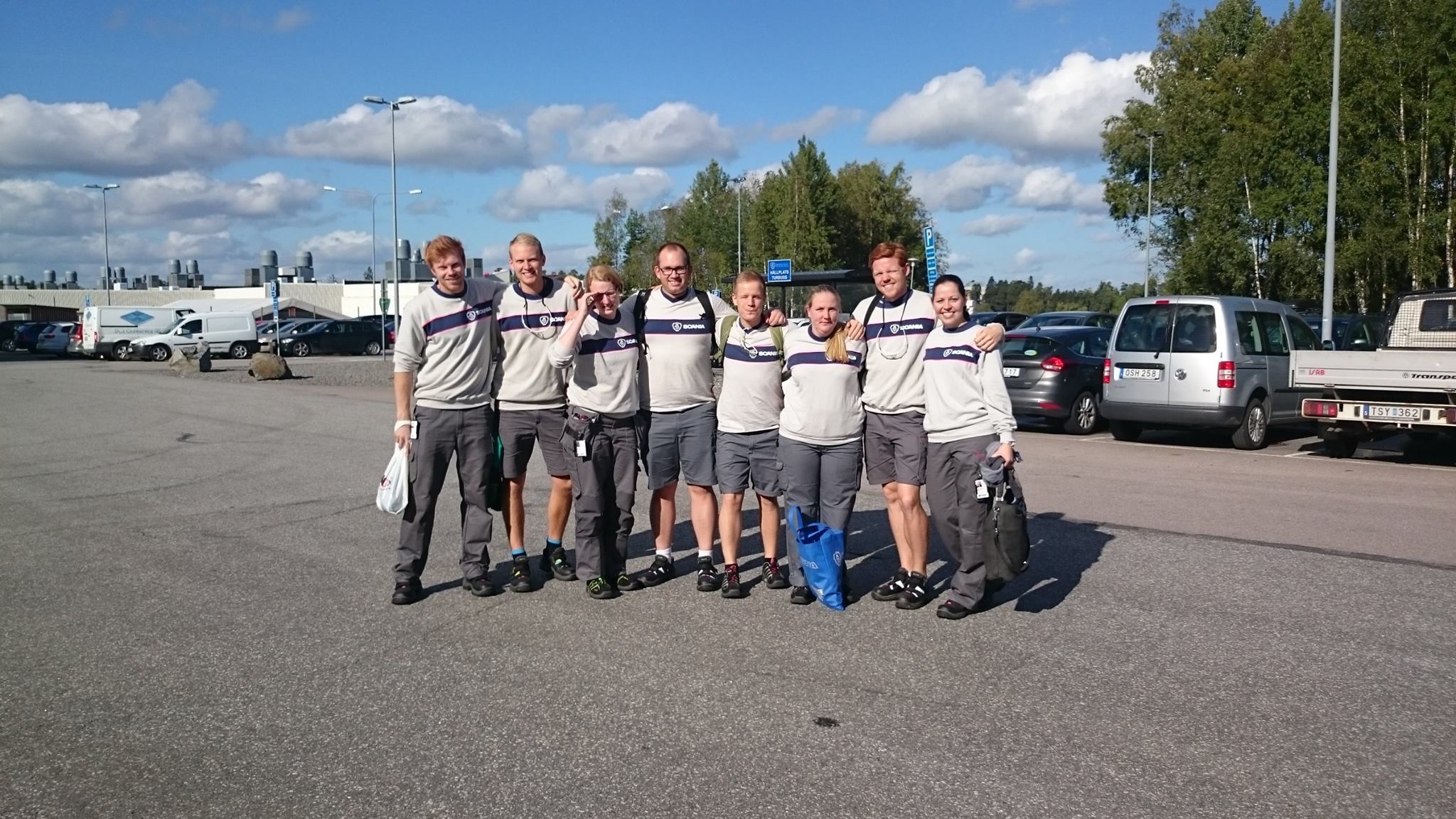The workshop practice
Oct 25
Scania
Comments Off on The workshop practice
The three-week workshop practice, which is part of the six-week introductory program at Scania, was one of the activities that I had been looking forward to the most since I signed my working contract with Scania. It takes place in August and September each year and is part of the introduction program for the newly recruited trainees.
There are three production facilities in Södertälje: bus and truck chassis, axels and gearboxes, and engines. The aim of the workshop practice is to obtain first-hand experience of how Scania’s products are assembled and to get an insight into the daily work flow at the production lines.
Due to safety reasons, the regulations concerning what clothes or shoes to wear when working at the assembly lines are very strict. Therefore, each trainee was given a pair of safety shoes on our first day at Scania. Furthermore, we all received a workshop outfit, consisting of work trousers, T-shirts and a sweater.
I still remember the moment, when I entered the chassis production facility for the first time. There was so much happening simultaneously that I did not know where to look first. The factory was surprisingly clean and light, all components were perfectly organized on the shelves, and every single step along the assembly line was precisely structured and planned in great detail. When walking through the production hall, you had to make sure to stay within the yellow lines, which are drawn on the floor, since there are so many small trucks, such as forklift trucks, driving around in order to supply the different workshop stations with new material. Thus, one of the first rules we learned was that these trucks were always allowed to go first.
Wearing the Scania outfit that we were given earlier, we trainees were dressed in the exact same way as all the other assemblers at the production line. Even the workshop managers all the way up to the plant manager wore at least the beige Scania T-shirt. This is, again, a typical example, that shows Scania’s unique organizational culture, where everybody – from the assembler to the top manager – feels like being part of one big family.

When I was at the chassis assembly line, I worked with the team that put the engines into the bus chassis. I was surprised by the fact that a lot of work is still performed manually, for example, pushing the chassis from one work station to the next at the end of each tact time. The tools that are used in the chassis production are very heavy and not so easy to handle and it was exhausting to stand up during the entire day. Thus, my feet and shoulders hurt quite a bit when I got home from work.
During my second week of workshop practice, I was at the rear axle assembly line. The tact time, which is the time spent on each unit, is a lot shorter compared to the bus chassis production. Furthermore, since the rotation of an axle from one work station to the next is completely automated, every movement is prescribed in detail and has to be followed strictly. In addition, taking a break for drinking a sip of water, eating a snack or going to the restroom is steered by the tact time.
However, the workshop practice has been a very valuable experience for me. From day one, I felt like being part of the team and the assemblers were very patient and thorough when they taught me their tasks. The production facilities are really “the heart of Scania” and I have even more respect for the Scania assemblers, who are standing at the production lines every single day, now, after I have worked there myself. The assemblers’ dedication and commitment to Scania is truly exceptional and is definitely one of the reasons why Scania can retain such a high level of quality in its products.

 RSS
RSS
Senaste kommentarerna